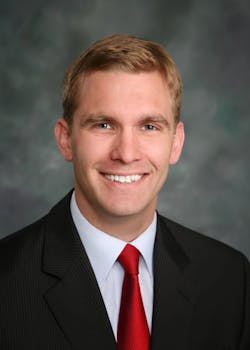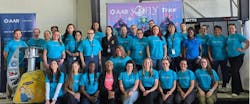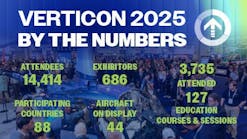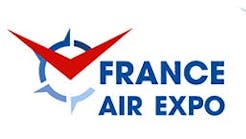“We’ve got to go where they are.”
It’s a common statement by my fellow members of the FAA-lead Youth Access to American Jobs in Aviation Task Force. “They” are the youth on whom the entire aviation industry is focused — a repository of talent and potential that must be tapped.
It’s “where they are” that’s the challenge. The expression commonly gets reduced to social media: Go where they are and find some viral content that makes aerospace careers attractive. I’ve made a hobby of seeking out young, interesting aviation voices on various platforms. One discovery resulted in FAA Administrator Steve Dickson recording a video with Stevie Triesenberg, private pilot and creative force behind “planegirl.” Stevie’s videos documenting pre-flight inspections and landing checklists — and sporting fashionable attire — have attracted more than one million followers on the short form video site TikTok. Dickson’s interview with her has garnered a small fraction of that attention on the FAA’s YouTube channel.
Maintenance is well-represented in the form of Elena Gonzalez, an AMT based in Miami building out an online presence to mentor and guide others via fixflytravel.com. My ARSA teammates and I exulted in Elena’s descriptions of paperwork and procedures in completing operational checks - compliance can be cool, after all. @FixFlyTravel has a ways to go to catch up to Stevie in follower count…maybe you can help.
I enjoy a good excuse to scroll my phone in the name of work research. Social media provides an easy out for those of us looking to find and attract young talent. It’s not the whole story though. A viral Instagram post or TikTok video can turn heads. Inspiring and instructive content from capable creators produces immediate impact. However, those messages last only as long as the post stays at the top of anyone’s feed.
Our success demands we explore an important facet of “where” the audience is by considering “when” they are: What ages matter in the development of budding aviators?
The usual answer is the younger the better. Part of our task force’s work has been to unmask that concept. To provide some data, we asked a group of aviation students in various programs at what age they began their interest in aviation. The results were surprising in two ways.
First, we learned to stop referring to those pursuing aviation careers as “youth” — the answers stretched all the way up to 50 years old. Looking past that, we saw there were two different ages that stood out in terms of “hooking” future aviation professionals: 10 and 18.
This implied the presence of different “tracks” towards aviation interest. On the younger end, early engagement and youthful energy persist through schooling and lead to ongoing activity. On the older side, soon-to-be professionals sort through options for future employment and make choices that likely align with their general interests; these students may not have craned their necks to catch airshow demonstrations as children, they applied broader interest in technology or skill-based work to a specific career field. Some even had these decisions “made for them” after military enlistment lead to an aviation specialty; as an industry we must improve our support for veteran transitions…a subject for its own analysis.
Engagement should start young, but how that introduction takes place depends on what students are ready for. Here’s a breakdown discussed during the task force’s last public meeting:
Pre-school & Kindergarten: Have fun and build interest.
Elementary School: Engage parents and provide brief, but frequent exposure to students.
Middle School: Provide hands on activities to students in their formative years first imagining future “grown up” life and work.
High School: Drive career goals through regular touchpoints that “demystify” aviation careers.
As you can imagine, the “how” changes as those students mature. I can’t imagine too many kindergartners are on social media, at least independent of grown up oversight. Elementary school students might be exploring new media, but certainly not in a way that Stevie or Elena will speak to them. Older students — certainly by high school and approaching adulthood — finally grow into the kind of free and exploratory technology use we imagine exploiting.
So, “going where they are” can’t really be done until we “go when they are.”
Brett Levanto is vice president of operations of Obadal, Filler, MacLeod & Klein, P.L.C. managing firm and client communications in conjunction with regulatory and legislative policy initiatives. He provides strategic and logistical support for the Aeronautical Repair Station Association.






